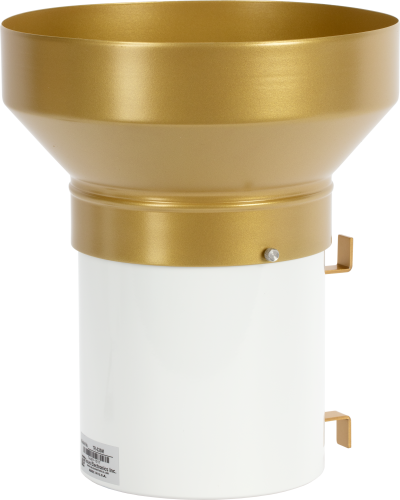Leading Features to Search For in a High-Quality Rain Gauge for Your Garden
Leading Features to Search For in a High-Quality Rain Gauge for Your Garden
Blog Article
Introducing the Science Behind Rainfall Evaluates: Exactly How These Tools Play a Vital Duty in Climate Study and Environmental Tracking
Rainfall assesses, apparently straightforward devices, hold an extensive relevance in the world of environment study and ecological monitoring. These humble tools quietly gather one of nature's most essential elements-- rainfall. Behind their plain exterior lies an intricate scientific research that is indispensable for comprehending the dynamics of our environment. As we peel off back the layers of this scientific veil surrounding rain determines, we discover a globe where precision, information precision, and thorough observation merge to reveal a much deeper understanding of our changing climate and its effect on the planet.
Significance of Rainfall Scales
Rain gauges play an important role in tracking and determining rainfall degrees, providing crucial information for climate study and analysis. These gadgets are basic in measuring the quantity of rains that takes place in a certain location over a particular duration. By accumulating and measuring rainwater, rain evaluates deal valuable insights into the circulation and strength of rainfall, helping meteorologists, hydrologists, and climatologists in understanding weather condition patterns and fads.
Among the crucial reasons that rainfall assesses are essential is their ability to give precise and localized data. Unlike satellite or radar-based measurements, which offer more comprehensive monitorings, rainfall assesses offer accurate information certain to the area where they are put. This localized data is vital for different applications, including flood projecting, dry spell monitoring, and water source monitoring. Additionally, lasting data collected from rainfall gauges assists in analyzing environment change impacts and patterns, adding dramatically to clinical study and decision-making processes. Basically, rainfall assesses serve as necessary devices in the area of meteorology and environmental science, playing an important function ahead of time our understanding of weather condition and environment characteristics.
Kinds Of Rain Scales
Functionality and Operation
In the realm of environment research study and meteorological researches, the effectiveness of rainfall assesses lies in their elaborate capability and exact operational systems. Rain determines are developed to accurately determine the amount of precipitation that drops over a certain area throughout a set duration.
The performance of rainfall evaluates is based upon the principle of measuring and gathering rainwater in a standardized fashion. This collected information is essential for comprehending neighborhood weather condition patterns, tracking lasting environment fads, and evaluating environmental influences. To make sure accurate measurements, rainfall evaluates requirement to be strategically positioned in Continue open areas away from blockages such as structures or trees that might hinder the collection procedure.
The functional aspect of rain determines includes regular maintenance to stop debris build-up, calibration checks to preserve measurement precision, and information taping for evaluation (rain gauge). Overall, the performance and procedure of rain gauges are crucial for collecting dependable rainfall information vital to climate research and ecological surveillance
Role in Environment Research Study
Provided the vital importance of accurate precipitation measurements in understanding weather condition patterns and ecological impacts, the role of rain evaluates in climate research is important. Rainfall gauges provide important data for environment research by quantifying the amount of rainfall that tips over a details location throughout an offered duration. This data is important for checking lasting fads in rainfall patterns, analyzing the influence of environment modification on rainfall distribution, and improving environment designs.

Environment scientists use data accumulated from rain gauges to assess variations in rainfall degrees, recognize local climate patterns, and assess the effectiveness of water source administration strategies. By contrasting historic browse around these guys precipitation data with existing measurements, researchers can discover changes in precipitation patterns, such as adjustments in the frequency or strength of rainfall occasions. This information is crucial for comprehending how climate adjustment is influencing rainfall characteristics and can assist policymakers make informed choices regarding adaptation and mitigation approaches.
Applications in Environmental Monitoring

In flood projecting, rainfall scale information assists to track rainfall intensity and distribution, permitting authorities to provide prompt warnings and take required steps to reduce flooding threats (rain gauge). Drought surveillance counts on rainfall gauge data to assess dampness degrees in the dirt and track precipitation deficits, assisting in the recognition of drought-prone locations and the implementation of dry spell feedback methods
Additionally, rain scale data plays a crucial duty in water source administration by providing details on water accessibility and use fads. This data is used to make enlightened decisions relating to water allotment, preservation procedures, you can try here and sustainable water source planning. In addition, in farming, rainfall gauge data helps farmers in maximizing watering schedules, plant choice, and total farm management techniques based on neighborhood precipitation patterns. Overall, rain gauges are essential devices in environmental surveillance, providing valuable insights that add to notified decision-making and lasting resource monitoring.
Final Thought
In verdict, rainfall gauges are important tools for determining rainfall, supplying useful information for climate research and environmental monitoring. With various types and functionalities, rain evaluates play an important function in understanding precipitation patterns and their influence on the atmosphere. By precisely measuring rainfall, these devices add to the development of scientific understanding and assistance in making informed decisions relevant to water source monitoring and catastrophe preparedness.
Rain gauges play a vital function in tracking and determining precipitation levels, giving crucial information for climate research and analysis. The standard rainfall gauge, recognized as the "tipping container" gauge, is one of the most frequently utilized devices. Ultrasonic rainfall determines use sound waves to identify the visibility of rainfall, offering real-time data on rainfall levels.Environment researchers use data accumulated from rainfall evaluates to examine variations in rainfall levels, recognize regional environment patterns, and evaluate the performance of water source monitoring techniques.In conclusion, rain gauges are crucial tools for determining rainfall, providing valuable data for climate research study and environmental surveillance.
Report this page